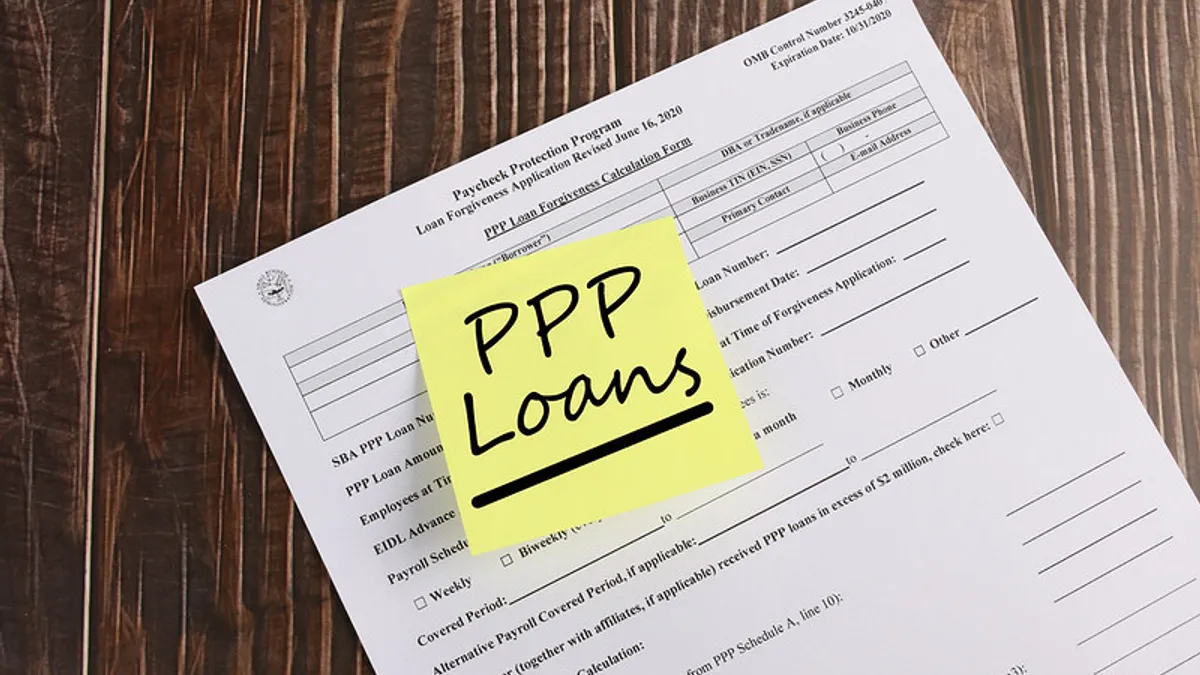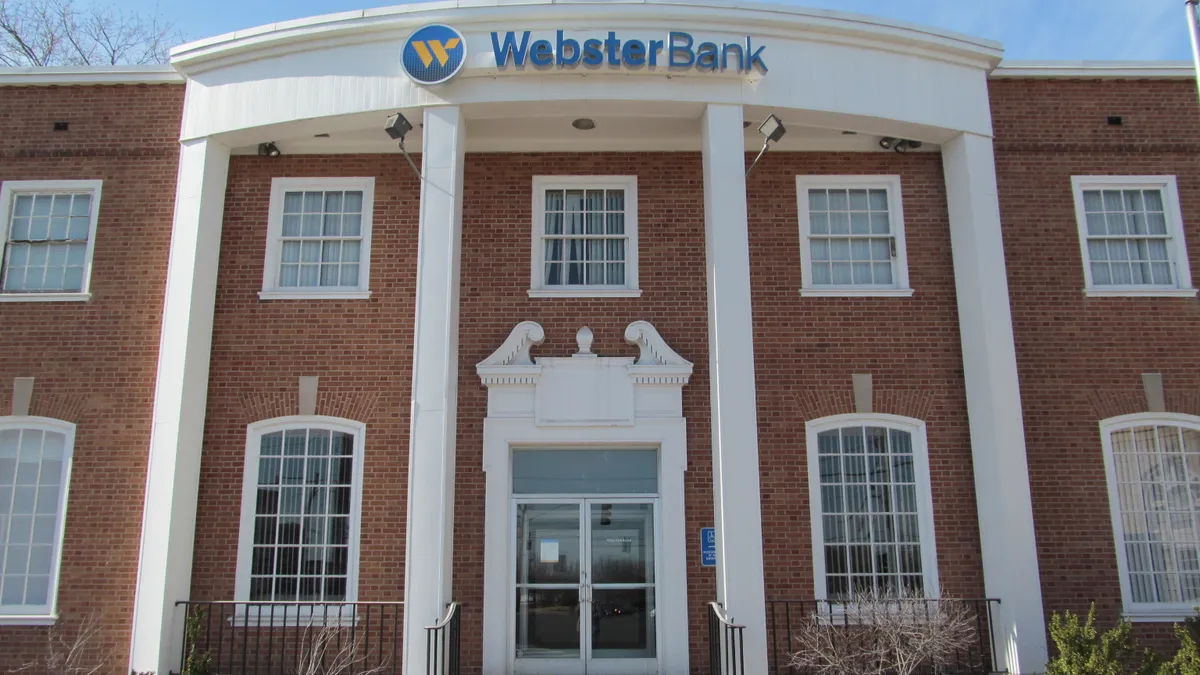Republican lawmakers questioned the Small Business Administration’s role in the forgiveness portion of the Paycheck Protection Program (PPP) at a House Small Business Committee hearing Wednesday, after some lenders took issue with a letter the agency sent, claiming banks that opt out of the SBA’s new forgiveness portal could face audits.
The portal, which the SBA launched in July, is aimed at streamlining the forgiveness application portion for PPP loans of less than $150,000. The platform is meant to help borrowers and lenders complete the forgiveness process. However, only a quarter of PPP lenders have opted in.
Some lenders have instead leaned on their own internal platforms for forgiveness applications, with some saying they fear the additional SBA option might complicate the process or confuse borrowers.
PPP loans are forgivable as long as a borrower uses at least 60% of the loan proceeds on qualified payroll costs.
The SBA on Monday sent a notice to PPP lenders that have not opted in to the agency’s portal, saying the agency would conduct independent outreach and audits on lenders that have not actively communicated to borrowers on the availability of forgiveness.
"This outreach will be primarily focused on those lenders who are not participating in Direct Forgiveness," the agency said in a letter seen by Banking Dive. "To avoid these lender audits, we would encourage you to opt in to direct forgiveness and maintain an active and aggressive outbound campaign to your PPP borrowers."
In his opening statement to the committee, Rep. Blaine Luetkemeyer, R-MO, the House panel's ranking member, called the SBA letter "a threat."
"There are multiple legitimate and prudent reasons why lenders haven't joined the SBA’s new direct forgiveness portal, including the fact that some lenders have had systems and portals up and running for months," he said. "Many lenders would like to assist their small business borrowers to the completion of this program. I will not stand by and let lenders be punished for working closely with their small business borrowers."
Luetkemeyer pointed to the SBA’s attempt at direct lending through the Economic Injury Disaster Loan (EIDL) program, which has come under scrutiny over fraud concerns, as an example of how the agency is "ill-suited to perform many of these tasks."
Robert Fisher, CEO of Tioga State Bank and chairman of the Independent Community Bankers of America (ICBA), said his bank chose not to participate in the SBA’s portal over concerns the platform might lead to technical or communication problems with the SBA.
"ICBA insists that the SBA respect lenders’ choice to not use the portal. Instead, the SBA has threatened to audit these lenders," he said.
Fisher also took issue with the SBA’s suggestion in its Monday letter that some lenders are deliberately delaying forgiveness to spread out fee income.
"The SBA continues to hear from borrowers that select lenders are not accepting forgiveness for 2021 PPP loans or are not actively reaching out to borrowers to invite them to apply," the agency said in its letter. "In some cases, we have been told by lenders that due to recognition of fees, some prefer that borrowers do not apply for forgiveness until 2022.
The SBA said the practice of discouraging forgiveness and managing earnings through the deferral of fee income recognition is not acceptable and could result in action by the Office of Credit Risk Management within the SBA.
Fisher told lawmakers he is not aware of any community bank discouraging forgiveness so it can increase its fees.
"That practice would be unacceptable and would cut against the grain of community bank relationship lending," said Fisher, who said his Spencer, New York-based bank made 929 PPP loans worth a total of $64.8 million. "My bank and other community banks choose to preserve our borrower relationships and not be cut out of the process by a direct SBA program. More broadly, bank underwriting and servicing is what makes SBA lending programs so effective, and must not be displaced by direct programs."
Rep. Jim Hagedorn, R-MN, went as far to call the SBA’s letter an attempt to regain control of its small-business lending program and an example of "bureaucracy looking out for itself."
"I think this move by the SBA to try to get some control back of the PPP program, when it was actually run very well through the banks, might be an effort to retain their turf," he said.
The SBA did not respond to Banking Dive’s request for comment.
Leslie Payne, Affinity Federal Credit Union’s assistant vice president of commercial lending, said her institution has opted into the SBA’s direct forgiveness portal in addition to operating its own forgiveness portal.
"We opted in because we want to give our borrowers every opportunity for forgiveness," Payne told members of the committee. "Although the process streamlines the borrower experience, it is not necessarily a streamlined process for all lenders, as many will have to monitor the SBA system and update their commercial lending platforms manually."
Some credit unions that have decided not to opt in to the portal say they feel their own systems are more consumer friendly, Payne said.
"There are also concerns that the SBA will not answer borrower questions in a timely fashion," she added. "It was very difficult to get answers in a timely manner last year, and some credit unions fear that borrowers will use the portal and then come back to their lender with questions, but the lender has no control over the system and will not be able to assist the borrower."
Late to the game
The timing with which the SBA rolled out the new portal has also led to a low adoption rate by lenders who already have their forgiveness plan in place, Fisher said.
"We've already developed systems, we have a methodology of how we put customers through forgiveness, so SBA rolling this out late in the game has made it problematic," he said. "Had they wanted this portal to be used, I think I would have rolled it out when forgiveness started. It's kind of late in the game to throw in another ancillary system when we already have it pretty down for our customer."
Payne offered some suggestions she said may help improve the overall forgiveness process, such as increasing the loan size for the use of the portal. She also urged the SBA to follow through on its commitment to focus its reviews on larger and higher-risk loans.
"Adopting this approach to forgiveness reviews will conserve the SBA’s resources and allow the agency to more efficiently allocate their finite resources to those PPP loans that warrant additional review," she said.






















